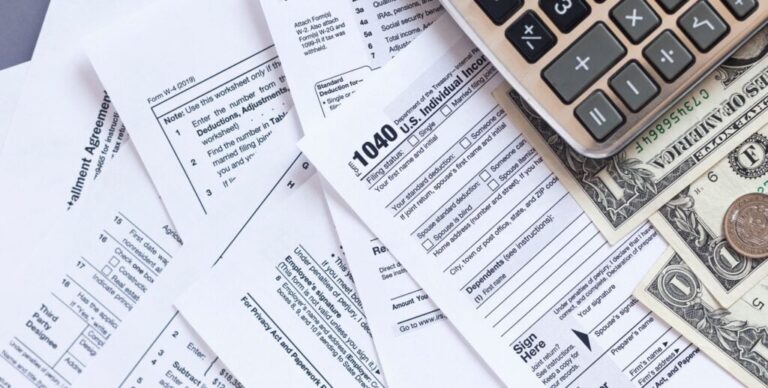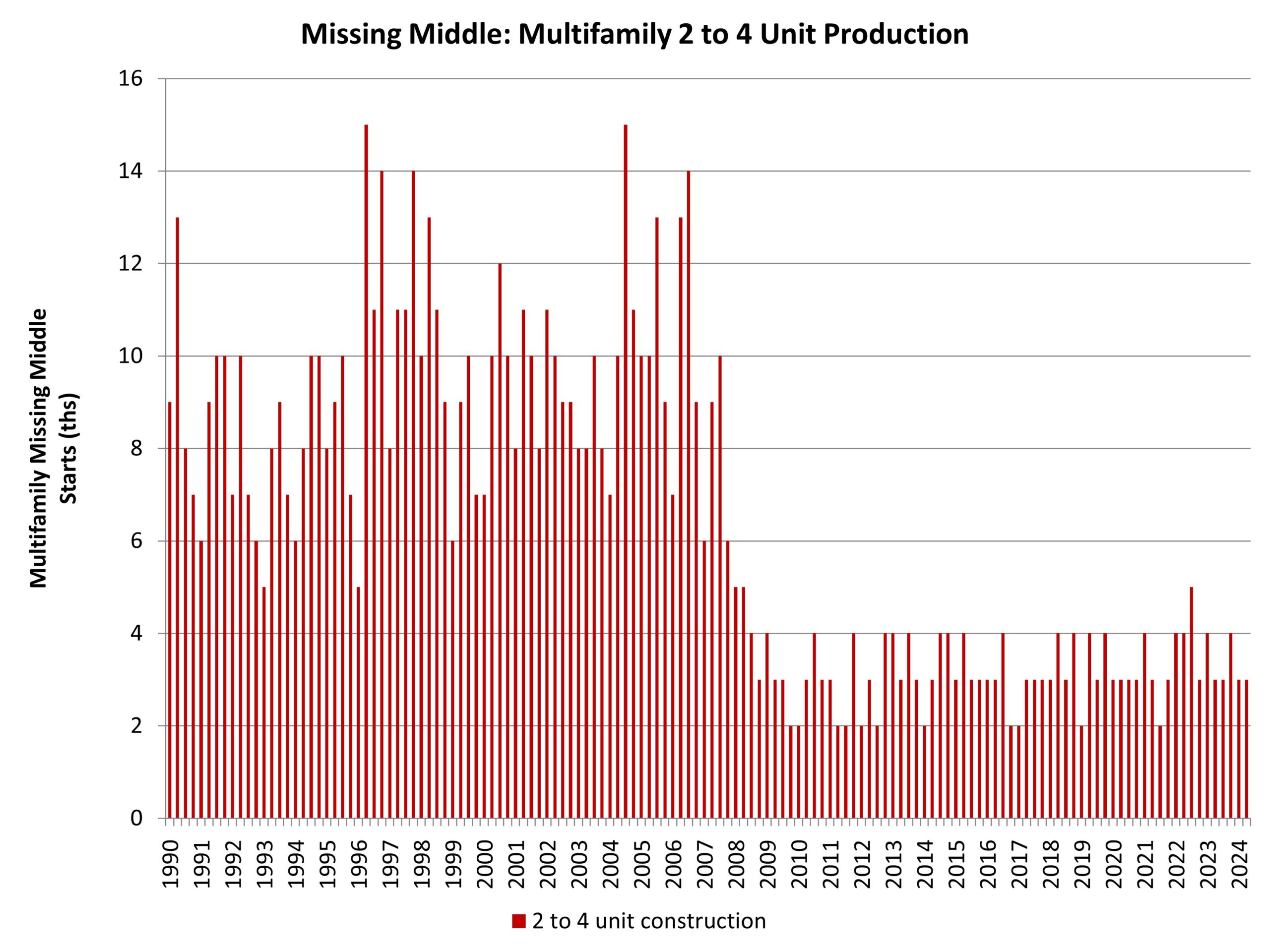Dave:
We’re in the traditionally slow time of year, but the housing market is anything but boring right now. Inventory is shifting back towards where we were a year ago. Bidding wars are popping up in some pockets and disappearing in others, and mortgage rates are keeping buyers and investors on their toes. Everyone’s trying to figure out what comes next, and today we’ll help you do just that. I’m Dave Meyer alongside Kathy Fettke, Henry Washington and James Dainard Today and on the market, we’re breaking down the headlines and trend shaping the end of 2025 and what they could mean for your investing strategy you are listening to on the market. Let’s jump in. Kathy Henry James, welcome to the show. Thank you all for being here. Kathy, how are you?
Kathy:
I’m doing great. Happy to be here with you in December,
Dave:
Henry, how are you?
Henry:
Fantastic man. Thank you for having me.
Dave:
James. What’s going on man?
James:
I was just flying all around. Landed late last night and then up early in the morning. I’m ready to go.
Dave:
Alright, well let’s jump into our headlines today. We have great stories about December housing market trends. We have updates on how investors are feeling about the market in 2026. Some interesting data about DSCR loan delinquencies, something we’re all going to watch out for, and that headline that everyone has seen about first time home buyers, we’re definitely going to start talking about that as well. Let’s start with you Kathy. You’re bringing some broad December housing market trends for 2026. Tell us what’s going on.
Kathy:
Well, it’s very interesting and this is an article from Housing Wire Logan Mo Shami, and it is basically what he’s been saying for a long time that if and when mortgage rates come down, even if it’s a little bit, the closer they get to 6%, that will bring more buyers in. It will make it more affordable for not everyone, but for a few, for some people who’ve been on the sidelines who now can qualify because maybe their wages have gone up, home prices haven’t gone up as rapidly and in some cases in some areas have come down a little bit. And then when you add a slightly bit better mortgage rate, you’ve got buyers. So that’s what we’ve seen. We’ve seen pending home sales really increase just in November and possibly again in December. So I brought two articles. One is from November 17th, so it’s a little bit dated, but the title is Despite Economic Uncertainty, weekly Housing Demand is Up Double Digits over 2024, increased 15% year over year, and it was 33, 30 4% just earlier this year. So the big headline as we’ve been talking about was all this excess inventory and there was this fear that, oh boy, we’re going into, we didn’t have that fear, but a lot of people had the fear that we were going into a 2008 situation where there’d be just massive amounts of inventory. The way that Logan Shami has looked at it as more inventory is a good thing, not a bad thing,
Dave:
It’s
Kathy:
Been too low, more is better. And then because there was more prices came down a bit and now it’s affordable and it’s reversing so people are diving back in again, not everybody but enough people. And so inventory is being gobbled up in certain areas. So 15% more inventory than last year versus what was 34%. So then he writes another article, December Housing Data provides early signs for 2026 next year, which is what so many people want to know, is this going to continue? And basically he says usually what happens in December is a sign
Of what’s going to happen next year and usually November and December are slower months, but that’s just kind of not the case. So the early signs are with these, if mortgage rates stay low then we’ll see more of the same. However, he also writes in the article that Jerome Powell doesn’t really want that. He doesn’t really want people diving into the housing market because that could drive prices up, inventory levels could get low again. So he said, be careful they’re probably going to cut rates in December, but then Jerome Powell’s going to say something like, yeah, but I don’t know, something that will scare bond investors so that mortgage rates might actually go up to slow down all these buyers because what he says the market reacts to so quickly and so he could control it almost as not even so much through rate cuts or rate hikes, but through what he says. But it’s interesting, James, you were just saying before the show that inventory is just not out there.
James:
We have a lot of flip volume always coming through our office, and so we’re comping houses all different price points. And I will say for the last two weeks, every time we go to Comp A House, we look at inventory and there’s nothing for sale. There’s little pockets, there’s a lot more density, but the last three homes that we were actually listing for the million dollar zombie flips, we sold the first one in the first five days and then the last three that we pulled up that we’re getting ready to roll out, two of them had no homes for sale in a half mile radius, zero, which is even lower than, I mean even 2020 in some of those neighborhoods.
Kathy:
But this is new, right? It seems like a month ago you were saying the opposite.
James:
Well, and it’s the seasonal though, so I think that’s what it is. It’s like you were just saying, when Jerome Powell speaks, everyone is on pins and needles and I think buyers, there’s so much fomo and fear in the buyer market that it’s like right now what we’re doing is we’re seeing this kind of push of sales because I think people are like, oh, the spring’s coming and if we don’t buy right now, it could jump. There’s so much prediction going on because we are definitely seeing way more activity than we typically see when we’re listing at home in December. You’re just kind of praying. You got one buyer going through there that’s serious. If you get a buyer on your house in December, that feels locking in and that’s a good buyer, but there’s not very many of ’em now. I think the buyers are trying to get a jumpstart into the spring and they’re looking now, and I do think it’s also who is looking for a home Now, a lot of times the spring’s hot because people want to buy a home transition for a new school year coming in the summer basically.
Now a lot of the buyers don’t have kids, and I think it’s just you buy when you buy. And so combination of FOMO and the demographics who are looking, there’s just a little bit more activity and there’s just nothing really to buy. I don’t think there’s that many more buyers. There’s just that little of options.
Dave:
I think it’s just a normal reaction to the conditions we’re in. We’ve been in more of a buyer’s market all year and all the crash people point to that and say like, oh my God, inventory’s up 30% year over year. It’s just going to keep spiraling and it’s going to be up a hundred percent. There’s going to be more and more inventory. The exact opposite is happening. Sellers are rational and they’re reacting to poor selling conditions and they’re not listing their homes for sale. People are saying, oh my God, there’s going to be so much more inventory. I just looked it up when you were talking James, for the last couple of weeks. New listings in Seattle are down year over year.
Yeah, the pricing is soft, but people just aren’t selling because they don’t want to sell into the soft market. And so I think that that bodes well for home prices staying solid, but I actually don’t know if we’re going to continue to get more inventory into next year if people just don’t want to sell right now. So it’ll be an interesting thing to see. But I actually think when you look at the market right now and look at the data, it feels like we’re in a pretty balanced market. There’s not a strong buyer’s market, not really a strong seller’s market right now. It’s just a slow market with not a lot moving.
Henry:
Yeah, my market is doing, I don’t know, kind of the opposite of what James is saying. He’s talking right now and I’m like, man, I wish that was what was going on where I’m at. But we’re still pretty slow. I mean, I’ve had two houses on the market. One is going on 90 days on the market, the other one is going on about 60 days on the market now. We did receive an offer yesterday that we’re going to accept, and then I got a backup offer coming in. So it’s like just now two offers came in on one of those flips, but it took 60 days, which is probably pretty normal.
Dave:
That’s probably, it’s just normal uncomfortable. I just don’t like it. I just
Henry:
Don’t like it. I want someone to buy it in two days. But inventory is up here. We’re around four months of inventory, which in our market it doesn’t signal a buyer’s or a seller’s market, but it’s a pretty normal market. And so real estate is always going to be local and regional. So you’ve got to follow your metrics because what James and I need to be executing in our markets is completely different, even though we’re doing the same thing
James:
And it depends on what the supply is. Yes, we’re seeing more sales, but we are also not seeing sales in certain segments. Townhomes tight sites, things with high density not trading, they are sitting stale. And that’s what we’ve seen a lot of that inventory come off the market because developers are given in a breather. And so you really want to look at what’s your price point, what’s the affordability sector, where’s the velocity? But then what are you selling and how do you position it? If I had a bunch of town homes to sell right now, I’m not putting ’em on right now. I’d wait until the beginning of the year.
Dave:
Interesting.
James:
But if you get a single family house, that’s good, livable and low inventory, put that thing on, who cares, right? Get an early Christmas present.
Henry:
Well, I’ve got a single that’s been sitting for 90 days, so somebody come back to me an offer
James:
A low ball, you’ll take a low ball. I would
Henry:
Take an average ball.
James:
So much of this is timing. I mean, me and Dave just had a house sit on the market forever.
Dave:
A hundred days more,
James:
A hundred days, but every time we comp this house, we’re going, this is a great value for this
Dave:
Home.
James:
And it comes down to, so we got this little surgeon activity and I will say the buyers looking now, there’s a little bit different because the buyers looking in August wanted five to 8% off your list price, and we sold two homes in the last week where we were around two and a half percent off list. That’s a good sign because buyers that are looking a little bit more serious rather than opportunistic too.
Dave:
Alright, well let’s take a quick break. We’ll be back with more headlines right after this. Welcome back to On the Market. I’m here with Kathy Henry and James giving you the latest headlines. We talked about some December housing trends, what we’re all seeing in our markets just before the break. Henry, let’s move on to you. I think you’re covering a story that has been talked about a lot on social media recently.
Henry:
Yeah, absolutely. So I am here talking about if the first time home buyer is vanishing, and this is definitely catching my eye because I’m market mainly to first time home buyers because typically that has been the largest pool of buyers and it’s a safer investment strategy typically because the price points are lower. And so a lot of flippers look to buy properties and then market them to first time home buyers. But what this article is saying that, and it’s from the NAR, the National Association of Realtors, their data shows that first time home buyers now make up a record low, just 21% of all home purchases. And this is what really caught mind. The typical buyer right now is age 40 years old,
Dave:
Old. It’s insane. It makes me want to cry. Really? Wow, that’s so depressing. It’s awful. It’s the worst.
Henry:
And it’s typically been somewhere in your twenties to thirties where you’re able to make that first home purchase, right? It’s the white picket fence. You start your family, you buy a home, but that affordability seems to have shifted and now it’s taking people in their forties to be able to purchase a home. Also down payments are up. They’re higher. We’ve seen in decades, around 10% is the median price of what people are putting down.
Dave:
I was looking at this the other day in 1991, the median age of a first time home buyer was 28. That feels right to me. I don’t know. That’s about when I bought my first primary, I was 29 and that felt about right just in terms of my maturity level to be able to actually manage being a homeowner. Then it went up to, I think even in 2020 it went up, but only to 33. And it’s just in the last couple of years it’s just absolutely exploded. I mean, housing market aside, this just feels bad for society. I feel like this is breaking the social contract, that housing is this unaffordable and although there are things you can do about it, it doesn’t seem like there’s going to be a quick fix for this.
Kathy:
I’m going to give a different perspective here because what happened over the last four or five years, or I should say from 2020 to 2022 was too quick of appreciation. Obviously some markets were appreciating, prices went up, what was it, 25% or something in some markets in one year, and that was a policy issue that was keeping rates low too long. And all of us could see it like don’t juicy. It’s because rates are low, the prices are going up, so it’s a catch up game. So for me, we’re just in this awkward phase where prices have already done what they should have taken five or six years to do, and at the same time you’ve got this massive millennial generation who would be normally a first time home buyer age bumping into this. So they’re coming in when the appreciation happened already. So I would say give it three or four years and they’ll be, things might normalize, we’ll see, but it’s temporary I guess is what I’m trying to say.
Henry:
And I think the concern is more like long-term implications as well, because if people are having to enter the home ownership market later, they’re giving up equity that people have normally been able to start building when they’re younger. I think their article says on average they’re losing about $150,000 in equity by entering the market later.
And the people who are transacting now because they can afford it are leveraging the equity they have that they bought their homes when they were cheaper. And so the transaction volume is coming from people who have equity and if younger people now aren’t able to get that equity, how does that trickle down later? Does that compound the affordability problem? Because now this middle class, this second tier home buyer, this 50 to 60-year-old who’s now making up the majority of second home purchases, won’t have that buying power because they weren’t able to enter the market until later. So if something doesn’t adjust, we could see a compounding effect, and it’s yet to be determined how that’s going to affect the housing market in the future. But I did have a question. I want you guys to guess. If the median home age for first time buyers is now 40, what do you think the median age for repeat buyers is?
Dave:
Oh, it’s got to be in sixties.
James:
No, I bet she’s lower because people are buying and selling so much more now.
Kathy:
45,
James:
I
Dave:
Think it’s 63.
James:
I’m actually going different. 35.
Henry:
35. Wow. Yes. No. Well,
James:
Because the people that bought and traded 62.
Henry:
Yeah, 60.
Dave:
Oh close. It’s all boomers. It’s just boomers, all boomers. It’s just boomers. Yeah. This is
Kathy:
Not a surprise
Dave:
Boomers of all the money,
Kathy:
But also they’re maybe in transitional times of their life. That’s
Dave:
True. That’s a common time to transact.
Kathy:
Yeah,
Henry:
That’s what I mean about the compounding effect. The boomers have the money they bought when the market was cheaper. They’ve been building up equity, they put down a median of 23% down payment right now when they’re transacting these second homes and 30% of those transactions for that demographic were in all cash.
Kathy:
Amazing. Wow, that’s insane. I also think that young people are just smart. If it’s going to cost twice as much
To own a property that you could rent for half that, why would you not just rent it? And maybe they’re investing in the stock market, maybe they’re investing in crypto, it’s just not housing. Because the truth is, if they did buy a house today and their payment is extremely high, higher than it would be if they rented it and they’re not really getting a huge equity gain, I mean what prices value going up one to 2%, 10% maybe. It’s really just not the most, it’s not what it was for them right now, like I said, I think it’s going to shift. We’re just catching up to where prices would, they would be here maybe next year, the year after, but they got there faster. So there’s a pause. So maybe it is smarter to rent and invest in other things right now for them.
Dave:
I agree with that. Kathy, I also just, I’m going to be bold and defend Gen Z here because I will say I think Gen Z is getting screwed economically and millennials, I just want to call out when we were all 23, do you know what every headline said? People don’t save their money anymore. These millennials, they’re acting irresponsible and they have credit card debt and they have student debt. Every generation justs on the generation below them. That’s
Kathy:
Just like, what are you doing at
Dave:
2010? Come on, does this, okay, us included. I do it all the time, but I will say I think there’s two things going on with young people that one, do you know the unemployment rate for people under 25 is 10% right now? That’s really bad. That’s really bad. So I think chat GPT and AI is not fully disrupting the labor market, but it is really hurting entry level jobs, which is really tough for that generation. The second thing is we printed so much money from 2008 to 2022
Kathy:
So much,
Dave:
And all of the gains from that disproportionately go to people who own assets. And that has been very good for real estate holders, gen Z, those people were in middle school and high school. So everyone who owned real estate for all of us, it was really beneficial for us that inflated prices of assets, but they weren’t old enough to own assets at that point. So there’s this disproportionate shift that happens to ’em where they didn’t get the benefit of the money printing, but they’re suffering from the increase in asset prices from money printing. So I’m not defending Gen Z on everything, but I do think there are some structural things here that are working against them.
Kathy:
It’s so true. And listen, I was defending you millennials back then.
Dave:
Alright, well this was another good one. Alright, well you got two more stories coming, but we got to take a quick break. We’ll be right back. Welcome back to On the Market. We’re here talking headlines. Kathy and Henry already shared their stories about December housing market trends and some concerning news about first time home buyers. James, what do you got for us?
James:
Are we seeing issues in the DSCR loan market?
Dave:
Oh, this is from James Rodriguez. He’s a repeat guest on this show.
James:
It was a very interesting article because as rates shot up and affordability and debt coverage was not working out well for your traditional banks, what did a lot of people do that were flippers? They got caught with bad deals or short-term rental buyers. They started running out of cash, they started doing a lot of cash out refis on their rental properties and they started also forcing a rental. People were too afraid to take the hit on their flip and they just are not covering their cost right now. And so what this article talks about is there’s been a slow shift in the amount of defaults. So since 2019, 2022 average volume went from 5.6 billion to 44 billion annually in DSCR loans.
Kathy:
Oh my goodness.
James:
And what we’ve seen is there’s been a slight uptick in rising delinquencies. So securing A DS Sierra loans quadrupled in mid 2022 when people were starting to really get caught in that transition and then now it’s been reaching a 2% default rate in August of 2025. Now that’s not huge, but it was less than 1% 12 months ago and the conventional loans right now are around 1%, so it’s trending higher because what we’re seeing is a lot of people that are actually in trouble in the market right now are investors that are getting caught.
Henry:
And
James:
So I think a lot of people that are forcing short-term rentals, they’re forcing to keep their flips. They’re starting to drown a little bit in these payments.
Kathy:
I was going to say, can you explain what A-D-S-C-R loan is for people who maybe don’t know?
James:
Yeah, so A-D-S-C-R loan is where a bank is underwriting the property based on your potential rent income or rent income that you’re collecting. So they’re going to look at more what the loan to value is, what’s your income, and they’re going to qualify you based on the property rather than who you are as an individual. They’re going to look at that a little bit, but a lot of these DSR lenders we’re doing projected rents, not actually existing rents. For example, I just refinanced three flips and I got no renters in ’em.
Dave:
Interesting.
James:
There’s nobody in those, but I still went through the process. They knew what it is. It wasn’t that I told them it was occupied either. It was just they gave it to me with being vacant. And so that is starting to creep up and catch people right now is because they’re forcing to keep, sometimes you got to sell your property, just get rid of it. You can’t drown in the debt and I think it’s slowly starting to catch up with people.
Dave:
I think this is super interesting because as James said about these DSCR loans, these are loans that basically exist for us. DSER loans only exist for pretty much residential retail real estate investors. So this is a really important thing for us because you see these delinquency rates on FHA loans, obviously it matters, but this is directly the people who are doing the same businesses that we are doing going into delinquency four times higher than they were in 2022. I’m not super surprised by that because in 2022 everything was easy and also D SCR R loans weren’t even that popular before 2022, and so there weren’t that many of them. So I’m not super surprised by this, but it is something to keep an eye on. Yes.
Henry:
A couple of years ago, only 1% or less than 1% was defaulting. Well, there wasn’t that many services providing DSCR loans. There weren’t that many investors using DSCR loans, and so a smaller percentage of them defaulting back then makes sense, but now because it’s gained so much popularity, every lender and their neighbor is giving out DSCR loans and not all of them are doing a great job of underwriting DSCR loans. I have heard investors getting DSCR loans for properties that do not pencil, and they were specifically going to specific lenders to get those DSCR loans because they knew those lenders were going to be a little more flexible and give them a loan on a property that didn’t pencil. And so I’m not surprised that the rate of people not being able to make their payments is going up one for that reason. And two, there’s just a lot more DSCR loans out there and there’s a lot more unqualified lenders underwriting DSCR loans. So yeah, going from one to 4% that seems, I don’t want to say normal or okay, that’s not what I’m saying, but as volume increases, your volume of delinquencies is going to increase as well.
Dave:
Yeah, I think that’s a really good point, Henry, about the lender too. This is a new loan product and probably not that good at underwriting it.
Henry:
Yes.
Dave:
I think they’ll probably get better at it. Just like after the financial crisis, they tightened up underwriting rules and now even though we’re in a weird economy, delinquencies on conventional mortgages are still pretty low, and so this happens. It’s an unregulated loan. It’s important to know though. I think this is something I will definitely be keeping an eye on,
James:
And that’s the concern is after going through 2008, the liar loans, I was watching everyone get these DSCR loans these last 12 months. I’m like, what is going on here? And everybody can white label this DCR product, the amount of salespeople selling this product. You could be A-D-S-C-R lender tomorrow, all of us. We could all sell the money.
Kathy:
That’s right.
James:
You do have to watch out for that, right? You have a lot of mortgage professionals we’re not making money and then they found something to sell.
Dave:
That’s
James:
A good point. Salespeople sell.
Dave:
Yeah, that is a very good point. All right, well, something we will keep an eye out for. We do have one more headline. It is from, I totally pulled to James on this one. Henry, I am bringing my own article. Oh, see, yeah, James, you probably know this one pretty well. Then we actually did this survey of real estate investors heading into 2026 for BiggerPockets BiggerPockets community. I’m going to share the headlines with you and then I want to do some trivia and see if you guys can guess what people are thinking. So all right. The good news headline here of the survey of the BiggerPockets community, we have over 3 million registered members and I think it’s an incredible way to get just a pulse on what’s happening with
Kathy:
That’s incredible.
Dave:
Residential, yeah, retail investors and overwhelming optimism about 2026, and that’s not always the case. If you look at the last year I made this index, a hundred is neutral, right? Last year, 108. So people are feeling a little better. Looking into next year, 150 people are starting to feel good about real estate investing again, and I think that’s awesome. We also asked a question, what is your main priority as a real estate investor going into next year? Overwhelmingly looking to grow. People are not trying to sell off their properties. There is no panic here. A couple people, like 15% of people said they were going to wait and see, but more than 50% said they are trying to increase their portfolio size in 2026. So I thought that was really cool. I don’t know if you guys are seeing this as well, but I know there’s this crash narrative that we have to keep pushing out of the way, but I feel like for people actually know what’s going on, optimism is really increasing among real estate investors.
Henry:
I would agree. I am optimistic.
Dave:
I don’t know. I’m seeing better deals than I have since 2021. A
Henry:
Hundred percent.
Dave:
Absolutely.
Henry:
Deals have
Dave:
Been
Henry:
Great right now.
Dave:
Okay, so let me ask you, out of the BiggerPockets community, what do they think the best strategy in the next 12 months is going to be?
Henry:
Ooh, it’s going to be house hacking or flipping. I think it’s going to be
James:
Burrs,
Kathy:
Multifamily.
James:
Whoa. All over the place. I love this. Okay. I think it’s burrs because if you can buy deep right now on something that’s a heavy fixture, by the time you get done renovating it and refinancing it, rates should be lower. And I do think rents are going to go up too.
Dave:
James got it.
James:
There’s a magical little sweet spot that we’re always looking for, and I really do think you guys, it is a good time to buy something with some work that needs to be done. Go in the hard money, go to refi it, your rates should be lower and rents might tick up, and that’s where you cash that sweet spot.
Henry:
My last two purchases, which I planned on flipping, I have pivoted and said I’m going to hold them just because the deals are so good. Again, real estate is so cyclical. When I first got in this game, you could buy a property that cash flowed pretty much on day one or right day one after the renovation. And then over the past two to three years, that’s been very difficult. But now I’m getting deals at a price point again where after I renovate them, I can cashflow. And the last two properties I bought one, I’m paying a hundred thousand, I’m putting 60 in it, and it’s going to rent for 18 to $1,900 a month. And another one I’m paying 80 k for, we’re putting 50 in it, and I can rent that for $1,500 a month. That hasn’t happened that cleanly in a few years, but now it’s starting to happen again. So Burr, I can see where your point
Dave:
James, well, owner occupied house hacking and live-in flips came in second. I will just say people are not happy about short-term rentals that came in dead last, dead last. Absolutely.
Kathy:
Oh my gosh.
Dave:
There’s still some enthusiasm for midterm rentals, especially among newbies, but short-term rentals, no one wants flipping’s more popular than short-term rentals and mid-term rentals, which I was surprised to see, at least among the BiggerPockets audience, it’s more rental property investors. So I was surprised to see that.
James:
I think it’s going to be a good year for acquisitions. We bought more multifamily the last 24 months than we bought in the last four years.
Dave:
Really,
James:
There’s just been heavy value. Add some good buys, you got to be patient, but when you pull the right deal, you hit the right deal. Just be patient, but it’s
Dave:
There. Awesome. Well, I like that. I think what folks in the bigger box community are seeing opportunity. They’re saying everything. We ask why, what is the biggest opportunity for real estate investors? And there’s just a lot of enthusiasm across the board. People are saying increasing inventory, lower mortgage rates, better ability to negotiate was number two and falling prices as four. So I was happy to see this because I see falling prices in more inventory as an opportunity. Like what you said, Kathy Logan says more inventory is a good thing. I think it’s a good thing. Some people are like, oh, prices are going down. I’m like, yeah, that’s called a sale. That’s a good time to buy stuff. So the BiggerPockets community is seeing that, but we’ll do one more trivia question. What do you think the biggest challenge real estate investors see? And I’ll give you multiple choice. So here are the options. High mortgage rates, lack of capital for new deals, difficulty finding new deals, rising expenses, declining home prices or flat or falling red prices. Those are the biggest challenges. What do you guys think The number one answer was
James:
For me, money. The money I feel like is there. It’s the cost of the money in how long you have to have it.
Henry:
It’s not the access to it, it’s being able to afford it while you have it. Everybody can get it, but can you hold
Dave:
Well, it was actually really interesting. So it breaks down a lot by your experience level. So if you were asking a newbie, Henry, you’re absolutely right. Lack of capital for new deals is the number one thing. Mortgage rates are actually pretty low. People don’t see at that. The number two thing overall was for difficulty finding good deals. But the thing that was amazing to me is for experienced investors, people who have done 10 deals or more, number one by far, it’s not even close. This was probably the most dramatic difference in any of the stats was rising expenses, insurance and taxes. People are really struggling with this when you have a large portfolio. So I was curious what you all think about that because obviously all in that category,
Henry:
When we audited our expenses about six to eight months ago when we just went through and said, where are we blowing our money out of our business? It was by far insurance. Insurance was the number one expense we had in our real estate business,
Dave:
And there’s just not much you could do about it, right? It’s just one of those things like, sure, you can shop around, but it’s just kind of you got to eat it.
Henry:
We tried, we, we literally pulled all of our policies and what we were paying and we shopped it and it just didn’t make sense to shift some of those policies. We shifted a couple, but most of it’s just an expense we have to eat.
Dave:
It’s crazy.
Henry:
It’s insane.
Dave:
It’s crazy. I was just looking at my personal budget going into next year, how much I pay for insurance, not just property insurance, just insurance on everything. It’s so crazy how much money I spend on insurance every year. It’s nuts.
James:
Yes.
Dave:
All right. Well, we’ve gone way over the amount of time we’re supposed to record this show, so we should probably leave, but this was a lot of fun. Thank you as always, thank you guys for being here, and thank you all so much for listening to this episode of On The Market. We’ll see you next time.
Help us reach new listeners on iTunes by leaving us a rating and review! It takes just 30 seconds and instructions can be found here. Thanks! We really appreciate it!















